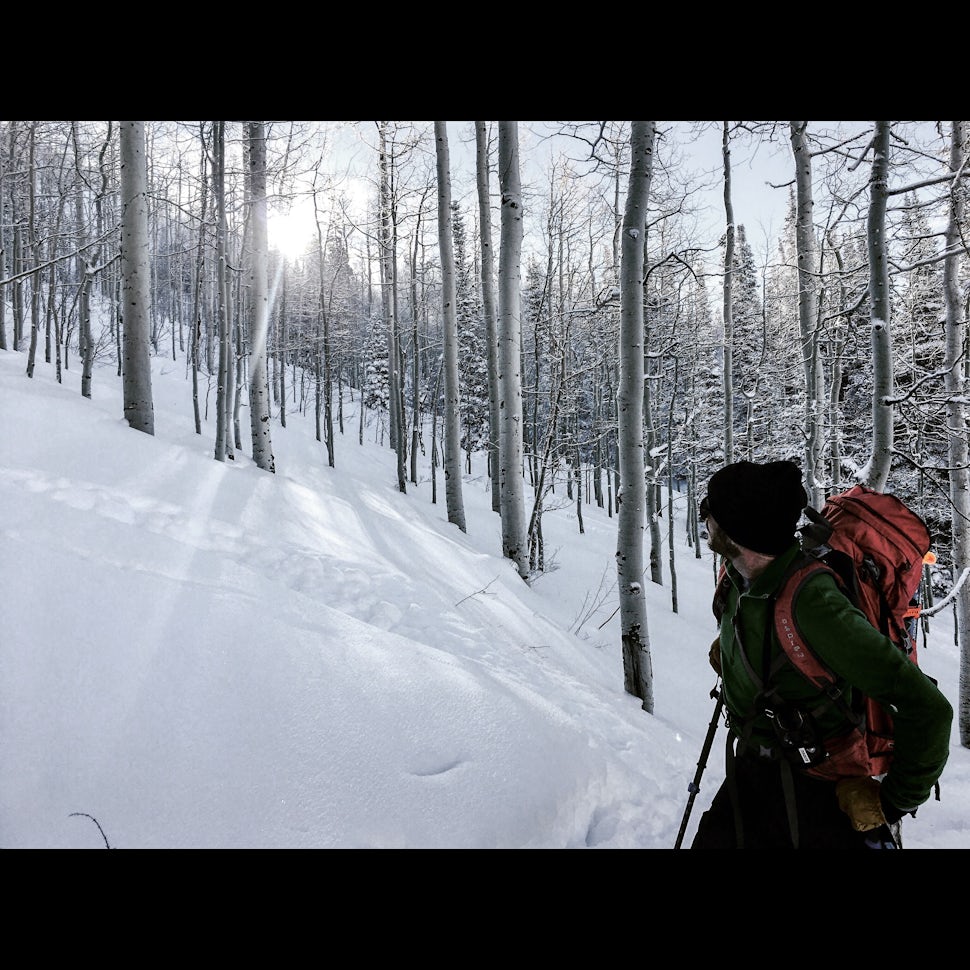The Beginner's Guide to Backcountry Skiing
Everything you need to know to get started backcountry skiing

So you've seen your friends and all those pro skiers on social media getting out and doing a thing called backcountry skiing. Now you're wondering what it's all about and how you can get started yourself. Here is a list of things you need to do before setting out into the backcountry:

1. Get the Gear!
There is a handful of items that you will need in order to travel safely in the backcountry.
First, you'll need an avalanche beacon, probe, and shovel in case you are in a situation where you need to rescue a fellow skier from being buried in an avalanche.
NEVER TRAVEL INTO THE BACKCOUNTRY WITHOUT AVALANCHE RESCUE EQUIPMENT.

Second, get some lightweight skis with bindings specific for backcountry travel. These bindings allow for a free heel to make touring up the mountain much easier, and also allow your heel to be locked into place when it's time to ski back down.
Along with the skis and bindings, boots with a walking mode (and toe divots if necessary) are a must.

Finally, you're going to need some climbing skins. These pieces of gear allow your skis to ascend up the mountain smoothly, while restricting you from sliding back down. One side has an adhesive glue material that sticks to the bottom of your skis while the other side consists of fine hairs that grab the snow while you hike up the mountain.

At first all this gear might seem expensive to get at one time, but just compare it to how much a season pass at a resort would cost you. And you only have to buy all the gear once if you take good care of it!
2. Take Avalanche Classes
Avalanches are no joke, over the past 10 years, about 27 people die in avalanches each winter in the United States. Contact your local avalanche forecaster for avalanche education and instruction on moving safely through backcountry terrain. These skills save lives!

3. Go with an Experienced Buddy
Find a friend who has experience traveling in the backcountry to take with you. Have them show you the freedom of backcountry skiing.
It is never a good idea to be traveling by yourself in the backcountry. There are just too many things that can go wrong in the mountains and getting home safely is #1.

4. Know the Forecast
Get your local avalanche forecasters app on your phone and keep an eye on the avalanche danger every day so that you can track what the snowpack is doing. If the avalanche danger is too dangerous for comfort, there is nothing wrong with going skiing in the resort or waiting a few more days for the snow pack to settle.
Now that you have all the gear and skills needed to travel efficiently and safely in the backcountry, go out and practice your skills and have the time of your life shredding the gnar!!!
We want to acknowledge and thank the past, present, and future generations of all Native Nations and Indigenous Peoples whose ancestral lands we travel, explore, and play on. Always practice Leave No Trace ethics on your adventures and follow local regulations. Please explore responsibly!
Do you love the outdoors?
Yep, us too. That's why we send you the best local adventures, stories, and expert advice, right to your inbox.







